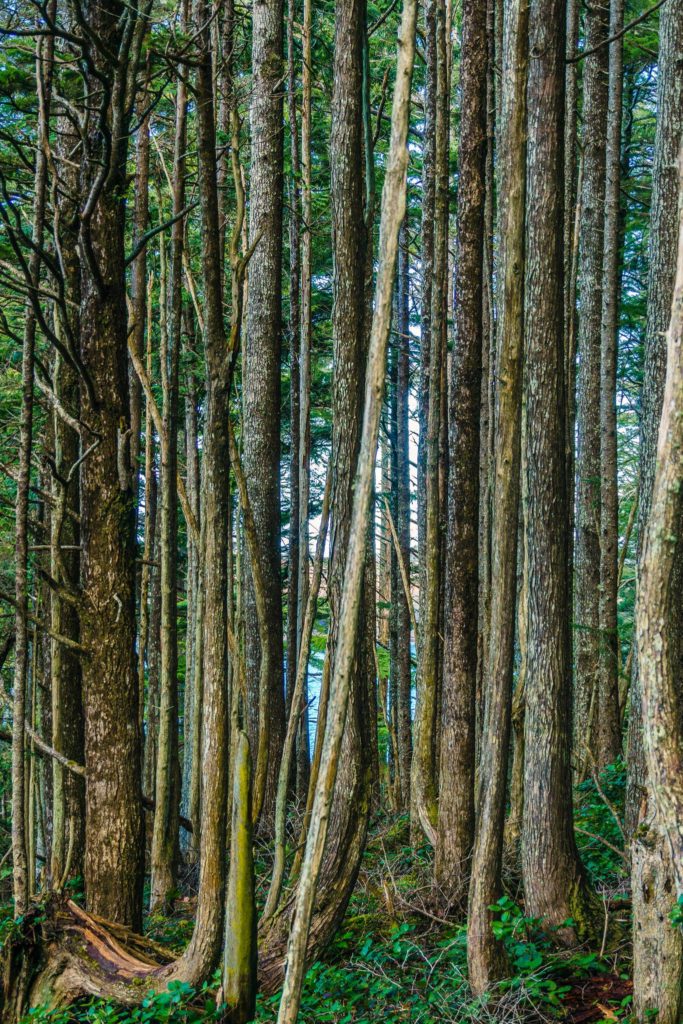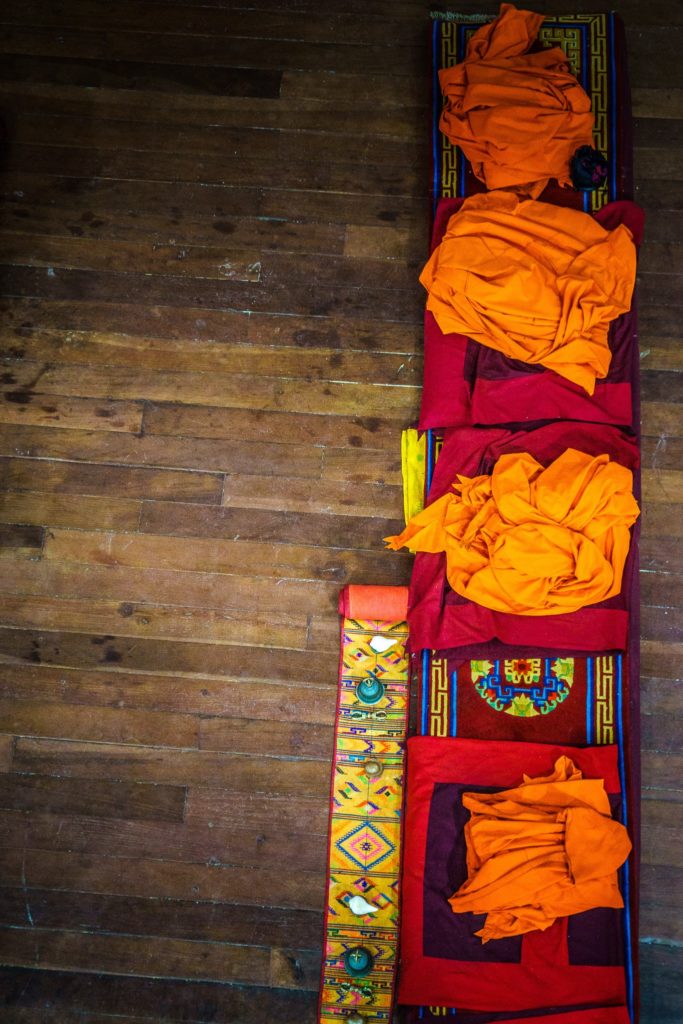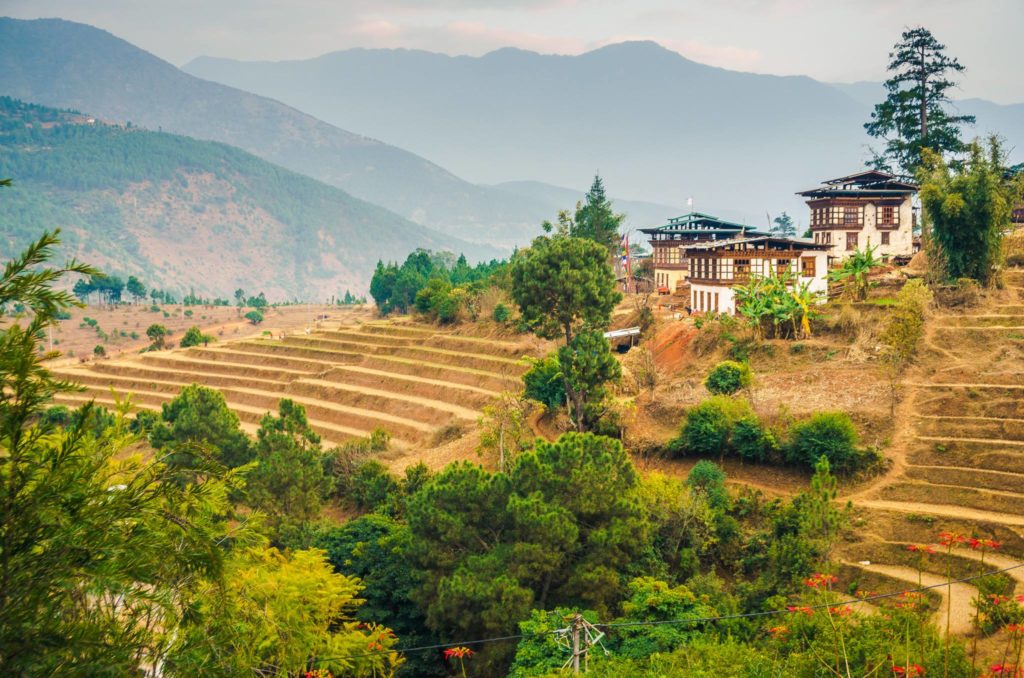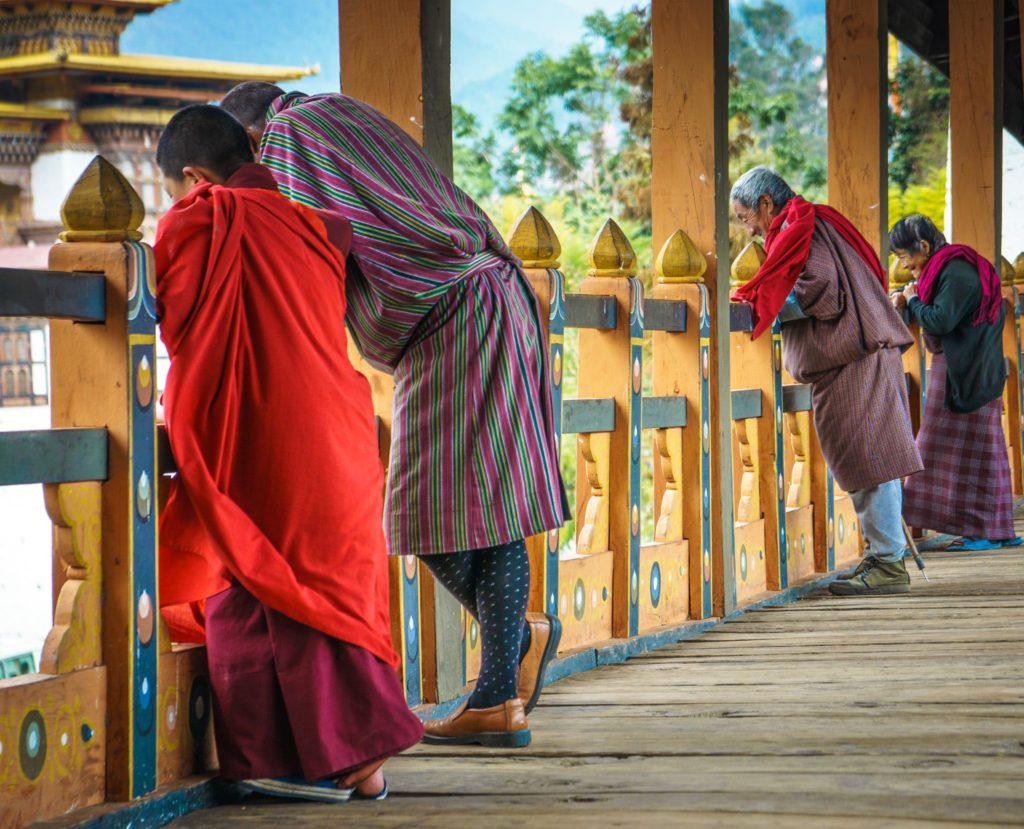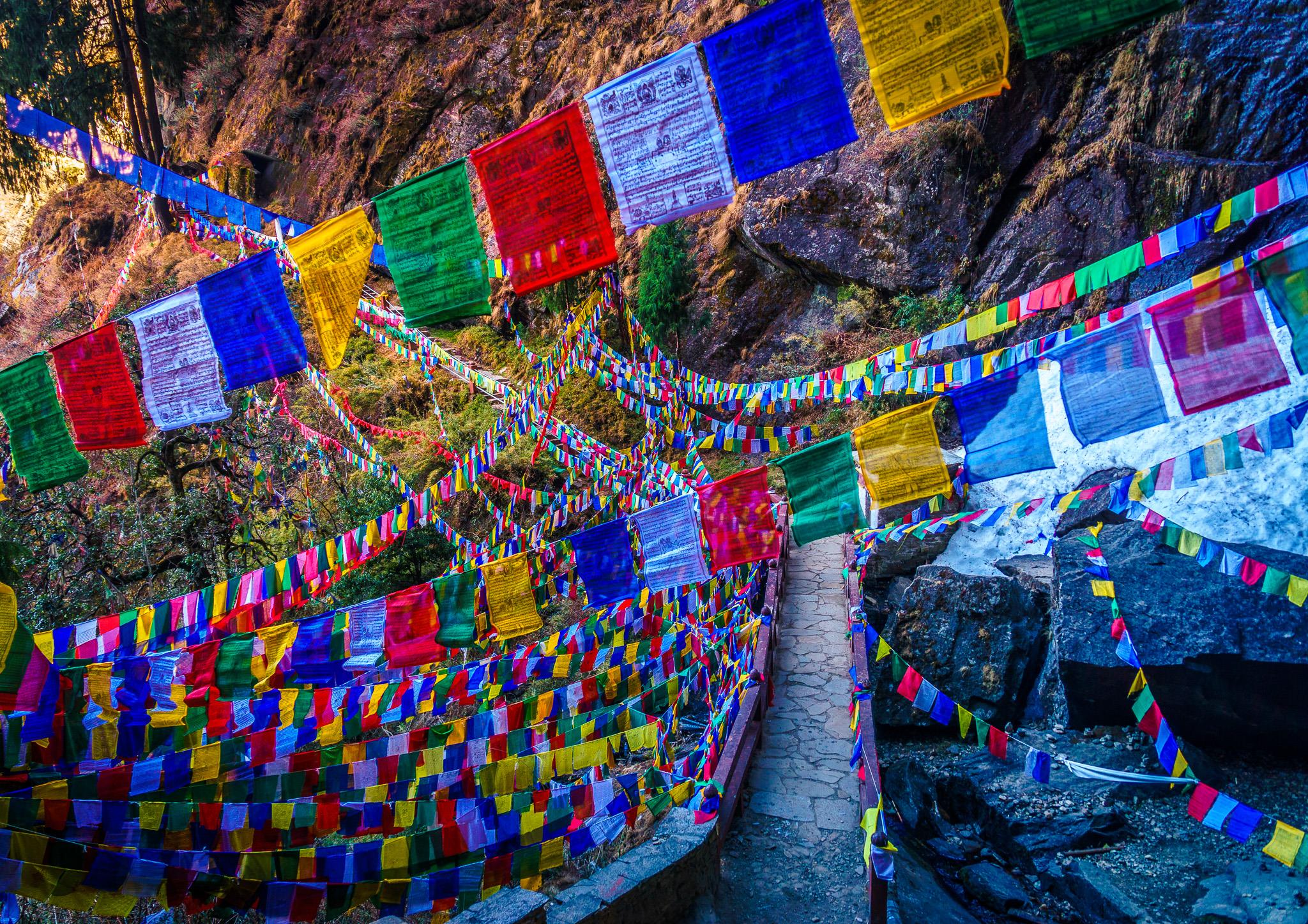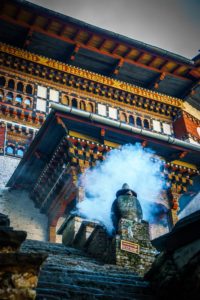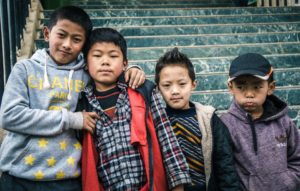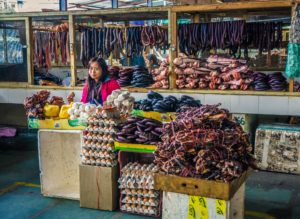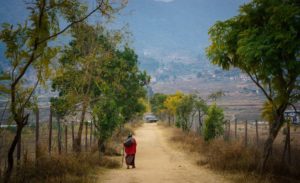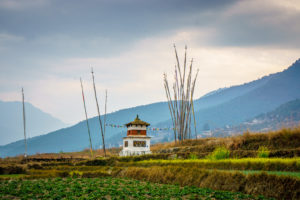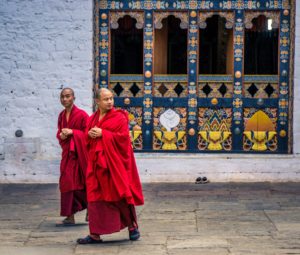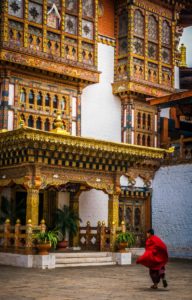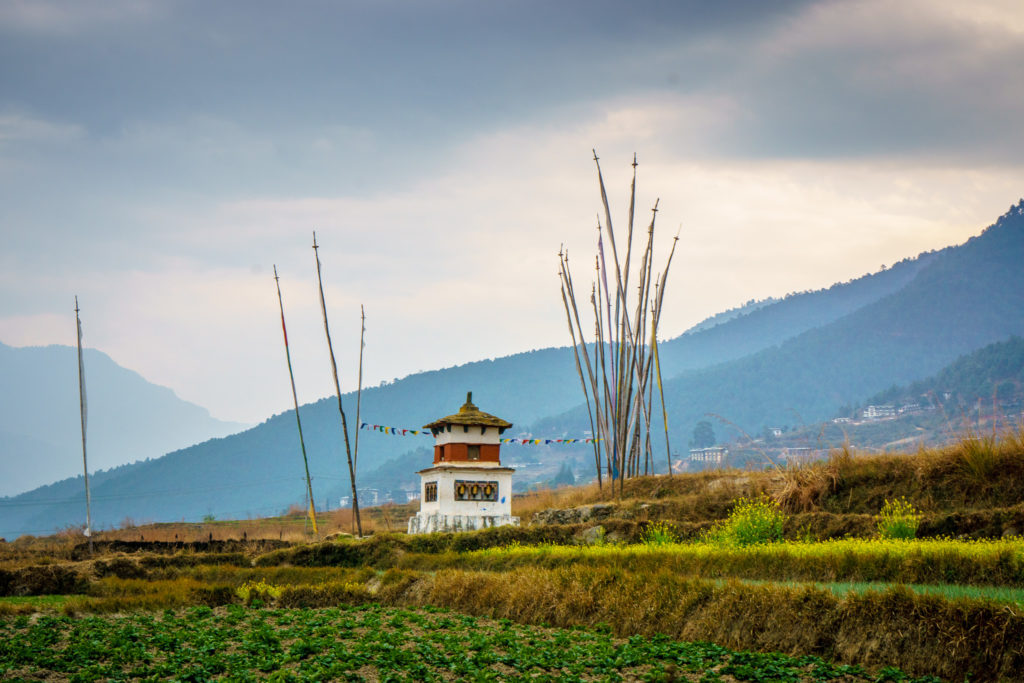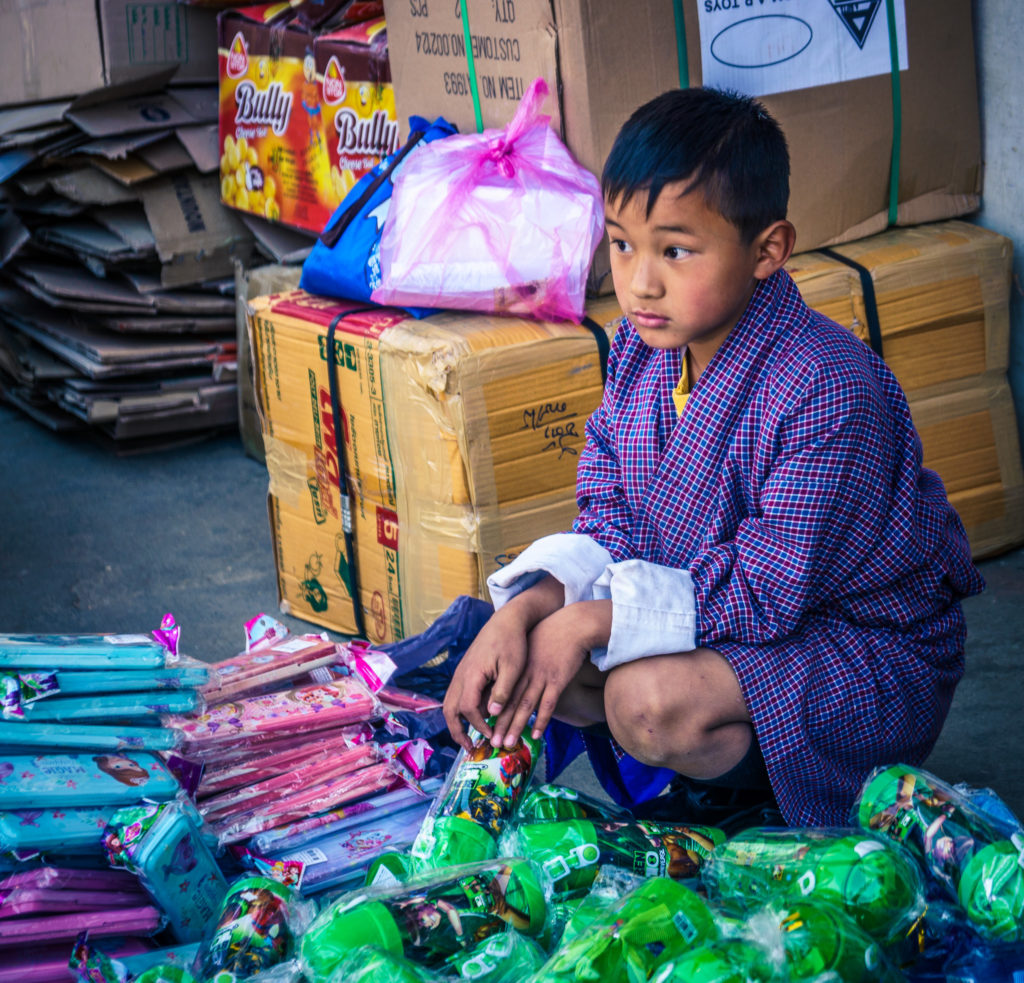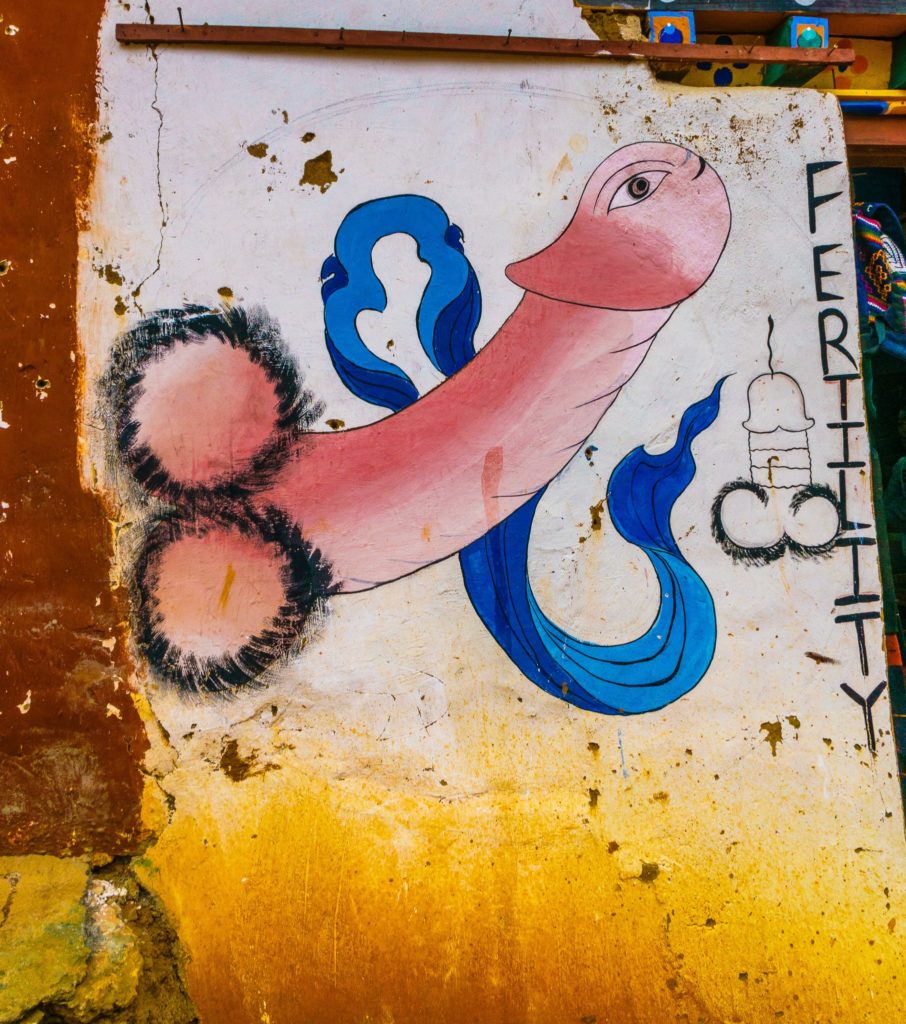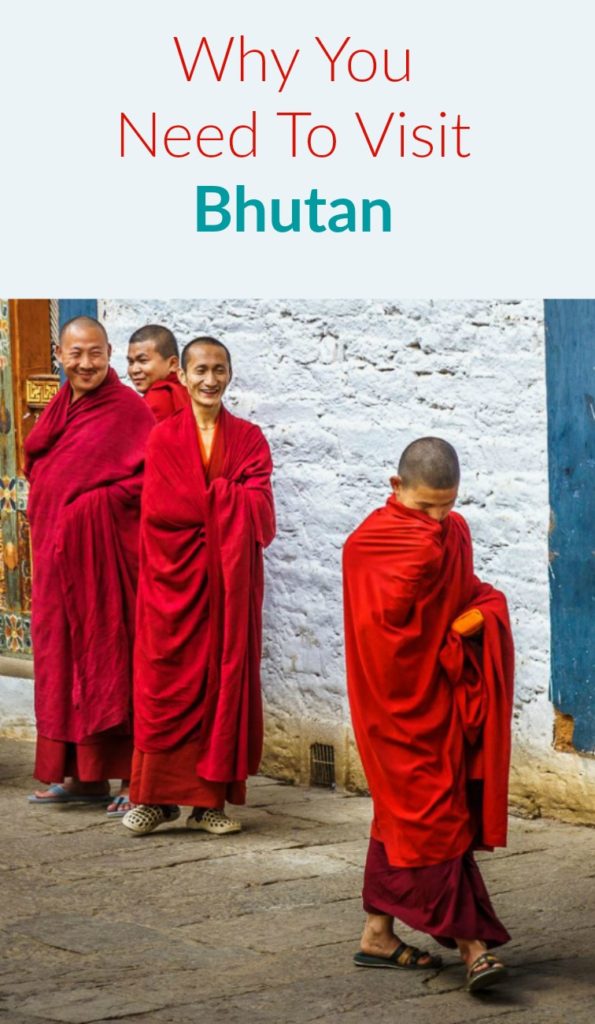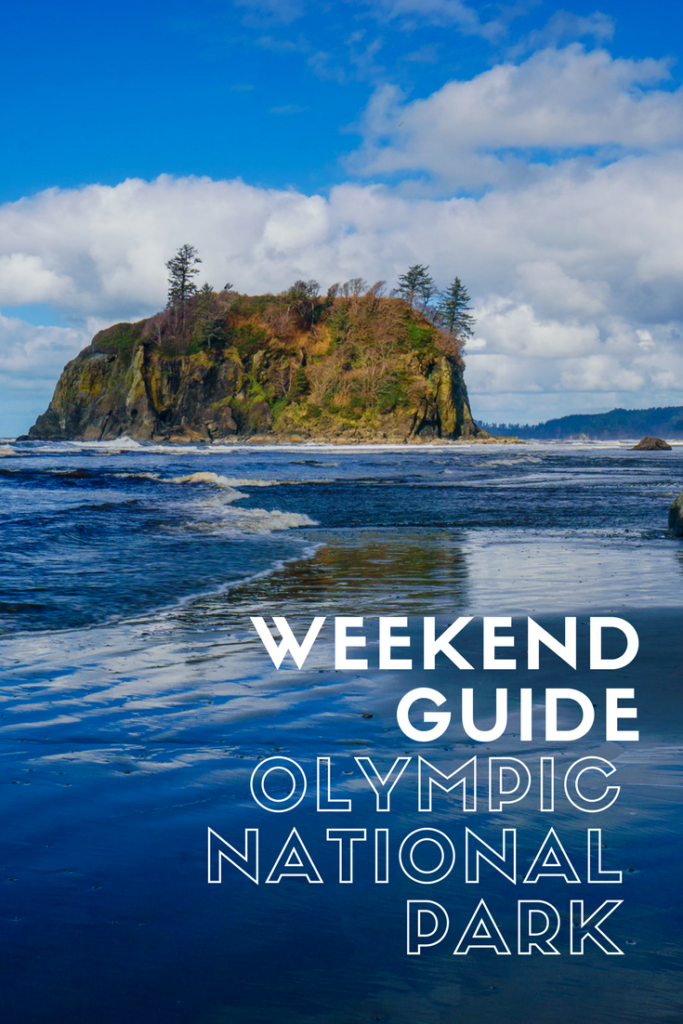
As I mentioned in a previous post, I spent last weekend hiking and photographing the wild, rugged beauty of Olympic National Park. If you want recommendations on what to see and where to stay, I highly recommend checking it out. In this post, I’m going to give you a general idea of how I spent my weekend.
You can spend several days exploring Olympic National Park and not get bored but since I’m a weekend warrior and I don’t live that far away, I decided to make a quick weekend visit.

I was thinking about heading to the park for a solo adventure but decided to invite along my friend, Robyn, since she’s also into hiking and photography. If I know in advance that I want to set aside dedicated amounts of time to shoot a particular scene, it can be a pain in the ass to travel with friends who aren’t into photography. I totally get it. There are only so many hours you can spend staring at the same damn tree. For the record, we spent at least an a hour and a half photographing a single tree (it was a really old, beautiful tree but still. Most people don’t want to deal with that).
As I go through this itinerary, keep in mind that a lot of time was spent at each destination looking for the best spot to set up our tripods, actually taking the photo, etc. If you just want to hike and take a couple of snaps with your camera phone, you can certainly move faster than this.
Friday: Day 1
We left the Seattle area around 2 pm on a Friday so naturally, we got stuck in hellish traffic. On a normal day without traffic, it takes around 3 hours to drive from Seattle to Kalaloch Lodge on the southwestern end of Olympic National Park. Since the Seattle area has major traffic jams almost all the time and it was raining (you’d think we would know how to drive in the rain by now), it took closer to 4 and a half hours to get there.
I recommend either leaving the Seattle area when it’s not rush hour. Or bring a friend with you so that you can at least use the carpool lane. Hmm, maybe that’s the real reason that I invited Robyn along after all.
Once you drive past Olympia and you turn off towards the 101, you’re pretty much in the middle of nowhere. There are still plenty of gas stations so you don’t need to worry about that.
We stopped for gas in a tiny town called McCleary, a town of around 1,600 residents and home to the famous McCleary Bear Festival. When we saw the sign about the festival, we were thinking that it would be a cute festival to celebrate bears. Who doesn’t like bears? Robyn decided to research the bear festival in more detail and sadly, it appears there is some bear-eating involved. A detail that we wish we didn’t know.
We finally arrived at the Kalaloch Lodge around 7pm and checked into our room. The dining room at Kalaloch closes at 8pm so we decided to eat dinner right away. I had a pretty tasty hamburger with french fries and Robyn had a chicken burger. If you’re into more upscale dishes, like scallops in a lemon cream sauce, they definitely have that too. If you don’t arrive before the dining room closes, you’re on your own since the lodge is remote and there aren’t any restaurants nearby.

We didn’t really do anything on Friday night since it was dark by the time we were done eating and still pouring outside.
One thing to note about Kalaloch Lodge is that Internet access is not available, nor are TVs. Cell phone coverage is also very limited so the hotel has payphones outside in case you need to call someone. Who the hell has coins nowadays to make a payphone call, anyway?
%CODE3%
Saturday: Day 3
On Saturday, we woke up to light rain, which was a huge improvement over the downpour from the previous night, especially since we would be spending the day outside with our camera gear.
As we headed towards the Hoh Rain Forest on 101-N, we came across a sign for a giant Sitka spruce so pulled off the road to check it out. The tree was located right next to the parking lot and for the next hour and a half, we spent our time taking photos of the impressive tree. If you’re not a photography nut, your visit will probably be no more than 10 minutes. I don’t have exact coordinates for the trip but there was a well-marked sign off 101-N heading towards Hoh Rain Forest.
After spending some quality time with the tree, we turned north again and headed to Ruby Beach.
One of the nicest features of Ruby Beach is that it’s a 1/2 mile of hiking roundtrip to get from the parking lot down to the beach, making it accessible for kids and those with mobility issues. The beaches in Olympic Park aren’t for sunbathing. Think tidepools filled with ocean critters, awesome sunsets and wildlife spotting (eagles, otters, whales).
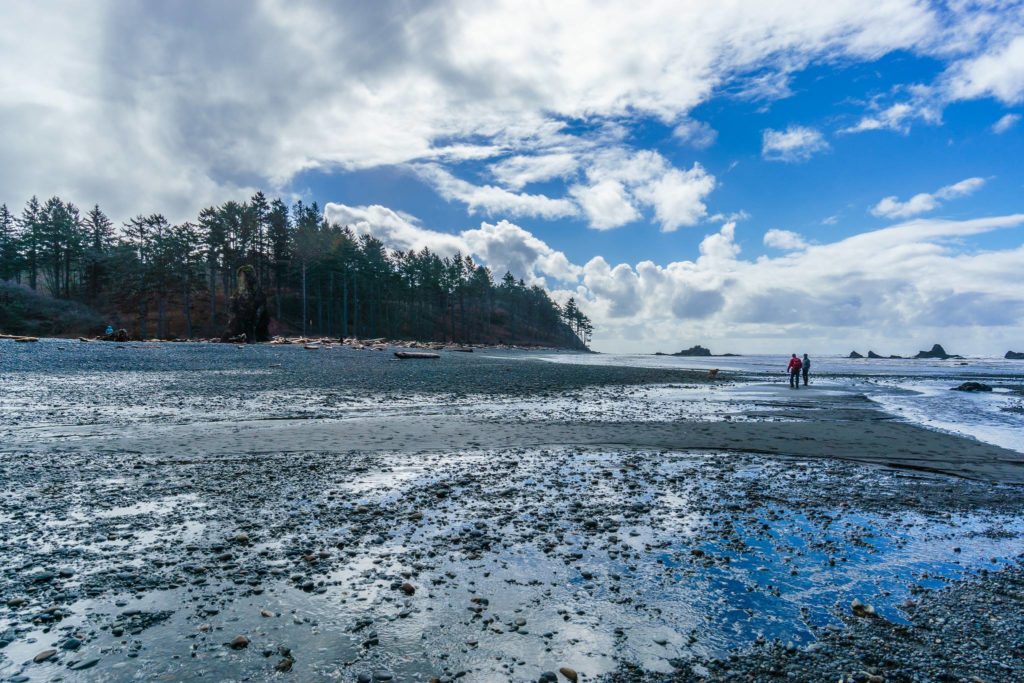
We were thrilled to see the sun as we pulled into the parking lot, especially since the weather was in the low 40s. Once we got down to the beach, we set up our tripods and started taking pictures. The weather was insane, with a lot of wind and frequent hail showers, followed by sun, followed by more rain and hail showers. Not the most camera-friendly weather but we made it work.

Make sure you pay attention to the tide when you’re at Ruby Beach, especially if you’re interested in exploring the tide pools. We were there as the tide was coming in. I made the mistake of not paying close attention to the tide and ended up with boots full of freezing ocean water. Let’s just say that it’s not an experience that I wish to repeat.

If you’re a photographer, the ideal time to be at Ruby Beach is sunset but since we had limited time, we spent our sunset time at Lake Quinault.
Ruby Beach is also pretty close to Kalaloch Lodge (around 10 minutes) so I almost went back to grab a change of socks. I didn’t want to waste time driving back to the hotel so we proceeded to Hoh Rain Forest, wet socks and all.
Driving to the Hoh Rain Forest from Ruby Beach took around an hour. There’s a well-marked sign leading visitors to the Hoh Rain Forest Visitors Center. Once you turn off 101, you’ll drive for 12 miles before arriving at the Visitor’s Center. On the way, you’ll pass an adventure store, which sells hiking gear as well as a tiny coffee shop.

Once we arrived, we headed straight for the Hall of Mosses Trail, which is an easy hike at only 0.8 miles roundtrip. There are a couple of additional hiking trails in the area, such as the Hoh River Trail (17.3 miles) and the Spruce Nature Trail (1.2 miles). We stuck to the Hall of Mosses trail since there are plenty of gorgeous and moss-y areas to photograph.

And as the name implies, Hoh Rain Forest is pretty wet most of the year so you’ll need to wear appropriate rain gear. The area typically gets 12 to 14 feet of precipitation each year, resulting in a lush, green canopy of moss and trees. It was actually a little difficult to photograph this area due to the constantly changing weather conditions. Within a 10-minute span, we went from overcast to sunny to hail storm.

After a couple of hours photographing the rain forest, we made our way back to the parking lot. My feet, while not entirely comfortable, were doing ok for the bulk of the hike, until a big hail storm came through at the end at the temperature dropped. My feet turned numb quickly and walking back to the car was a challenge. Thankfully, I was able to purchase new socks at the adventure store about 10 miles away.
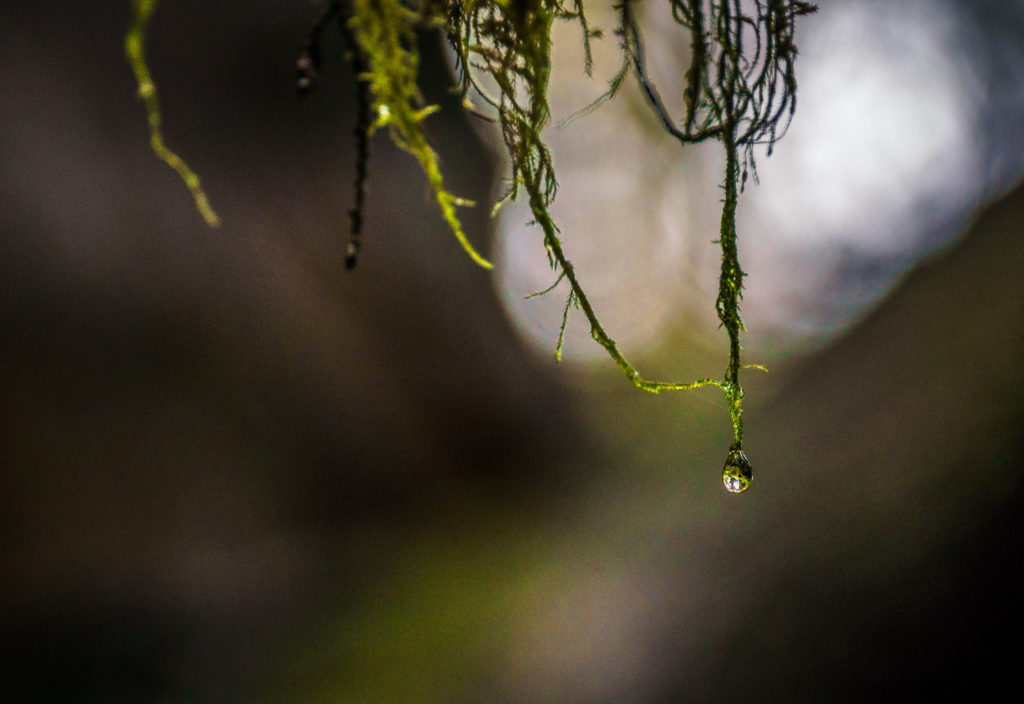
On our way out of the park, we spotted a herd of Roosevelt Elk. The females didn’t mind the fact that we pulled up beside them to take pictures but the males ran away pretty fast.

It took us an hour and a half to drive from Hoh Rain Forest down to the Lake Quinault area. Our first stop in the area was to the Rain Forest Nature Trail, where we had a forest of giant trees to ourselves. Once we finished with this hike, we made our way over to the lodge and down to the lake to photograph sunset. It was my first time visiting Lake Quinauilt Loge and from the outside, it’s very quaint. The lodge was built in 1926 and was fashioned after Old Faithful Inn at Yellowstone. President Franklin D. Roosevelt visited the area in 1937 and supposedly liked it so much that he declared the area a national park.

We packed up our gear after sunset around 8pm, at which point the restaurants at both Lake Quinauilt Lodge and Kalaloch Lodge were closed. We figured that we might be eating funions and pop tarts for dinner but thankfully, there was a pizza joint in Amanda Park that was still open. After downing a very unhealthy meal of cheese pizza, french fries and a root beer, we made our way back to Kalaloch and discovered that the hotel was fully booked, which kind of surprised me since March is very much off-season.

Day 3: Sunday
As you can see from the map above, Friday involved a whole lot of driving. We ate breakfast at Kalaloch Lodge (the oatmeal is yummy, btw) and headed north towards Cape Flattery, which is the northwestern most point in the continental U.S. Cape Flattery is located on Makah land so make sure to buy a pass once you arrive in the town of Neah Bay. Once in the town of Neah Bay, you’ll continue on a windy road for another 8 miles to get to the parking lot.
The hike out to Cape Flattery is easy but be aware that it’s pretty muddy. I saw some ladies wearing nice shoes and scarves and I was wondering what they were thinking. There are also elevated boardwalks in portions of the trail and they’re very slippery. I know this because I tried to move over to the side to let some folks pass and I wiped out. I ended up with a bruised butt but my camera was ok. Once you arrive at the Cape Flattery lookout, there’s not much to do other than admire the views and wave hi to Canada, located just across the water.
After finishing at Cape Flattery, we almost headed to Shi Shi beach, which I’ve heard is incredible but we opted out because it was already 1:30 by the time we finished our hike and we still had a long drive back to Seattle, with a stop at the waterfalls.

We had originally planned to stop at Sol Duc Falls but discovered it was closed once we got there. We didn’t sweat it too much since we had a backup waterfall in mind. We continued east on Highway 101, winding our way around Lake Crescent. You’ll want to take this drive slowly in order to enjoy it.

We finally reached the sign for Lake Crescent Lodge and parked in the lot designated for Marymere Falls, which is another easy, family-friendly hiking, clocking in at 1.8 miles roundtrip. While the falls are definitely the highlight, stop to spend time admiring the unique, moss-y trees and the wooden bridges. Oh, and prepared to get very wet.

I never knew how challenging shooting a raging waterfall was until I visited Marymere. Thankfully, Robyn had some tricks up her sleeve, which involved covering my camera with my rain jacket and turning it around on the tripod really fast to take the shot. I could only get a single shot off before my lens was covered in water droplets. And being near the water, it very cold and my hands quickly became numb. Next time, I need to bring thinner gloves so I can actually operate my camera while wearing them.
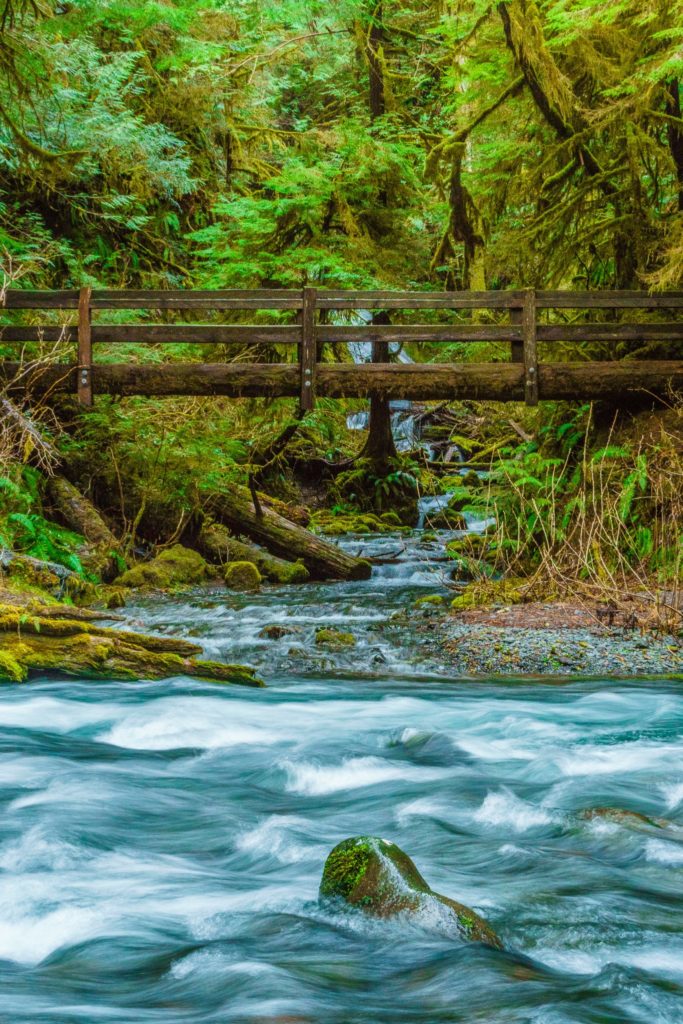
After visiting the waterfalls, we began the long drive back to Bainbridge Island, where we took the ferry back across to Seattle.
Here’s a roundup of the photography gear that I brought with me:
%CODE4%











